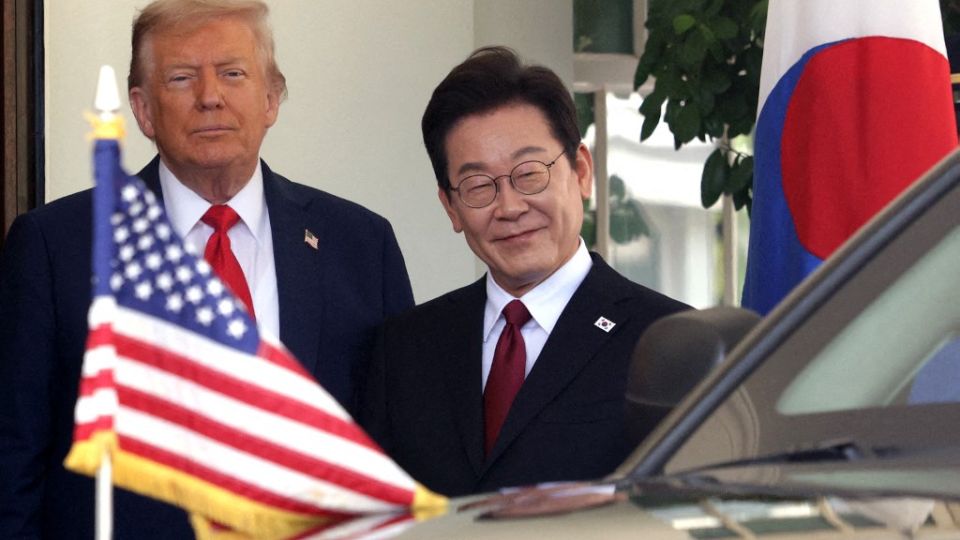September 22, 2025
SEOUL – Relations between South Korea and the US have dipped to their lowest point in years. On Sept. 4, US immigration officials detained about 300 Korean workers, mostly engineers, at a multibillion-dollar electric vehicle battery factory being built by LG Energy Solution and Hyundai in Georgia. After eight days in detention, all but one of the workers had returned home, but the fallout from the incident continues. As The Wall Street Journal noted in an editorial on Sept. 12, “Immigration and Customs Enforcement videos of South Koreans in handcuffs and shackles don’t play well in Seoul or Busan.”
The incident highlights contradictions in US President Donald Trump’s trade and immigration policies. Trump wants to crack down on illegal immigration but has yet to develop a policy that allows people to work legally, both to reduce labor shortages and attract foreign investment. As the same WSJ editorial put it, “Raids like the one in Georgia are a deterrent to the foreign investment Donald Trump says he wants.”
Trump’s policies contain other complications, such as the effect of tariffs on inflation-battered consumers, but those are issues for the US to debate internally. For South Korea, the important question is how to manage its relationship with the US going forward. Three statistics offer insight: the trade-to-GDP ratio, the value of household final consumption expenditure, and the US percentage of world gross domestic product.
The trade-to-GDP ratio measures the value of international trade in goods and services, both exports and imports, as a percentage of GDP. The ratio indicates the degree of dependence on international trade as well as economic openness. In 2023, the ratio for South Korea stood at 88 percent, with exports accounting for 44 percent of GDP. By contrast, the ratio for the US was 27 percent, with only 12 percent of GDP coming from exports. The impact of trade and the loss of access to markets is far greater for South Korea than for the US. In 2023, the US overtook China as the largest export destination for South Korean products.
Household final consumption expenditure is the amount of consumer spending in a country. It is a good indicator of the size and wealth of a country’s consumer market. In 2023 and 2024, the US ranked first with an HFCE of $19.8 trillion (2024), much more than the $9.6 trillion for the European Union or the $7.2 trillion for China. For South Korea, the figure was $840 billion. The total HFCE for the world was $60 trillion, of which the US made up about one-third.
Finally, there is the US percentage of world GDP. In the aftermath of World War II, the US accounted for half of world GDP, but that began to fall as Europe and Japan recovered and grew in the 1960s. By 1975, it had fallen to 28 percent, sparking talk of “American decline.” From there, it bounced between 25 percent and 30 percent before dropping to a new low of 23 percent in 2010, which coincided with the Great Recession and the rise of China as an economic superpower. Since then, it has ticked up, reaching 26 percent in 2023. This shows that the US has maintained a stable share of world GDP for almost 50 years. The populations of its major competitors are aging faster, which suggests that it will continue to account for at least 25 percent for years to come.
Taken together, the stability of the US GDP as a percentage of the world’s, combined with the size and wealth of its consumer market, suggests that the US will remain a critically important export market for South Korea for the rest of the 21st century. These trends also indicate that periods of overwhelming US dominance, such as the post-World War II era and, to a lesser degree, the post-Cold War period in the 1990s, are fleeting.
The size and wealth of the US economy do not hide the many social problems the US faces, particularly in comparison with other advanced countries. Nor does it justify bullying other countries, even to the point of threatening their sovereignty. Much of the US’ influence since World War II has come from cooperation and amicable relations with many countries, including South Korea. But these are issues that only US voters can address.
For South Korea, this means focusing on its national interest while keeping the long view in mind. Trump will be gone soon enough, and the nonsensical policy blurts from Washington will go with him.
Robert J. Fouser
Robert J. Fouser, a former associate professor of Korean language education at Seoul National University, writes on Korea from Providence, Rhode Island. He can be reached at robertjfouser@gmail.com. The views expressed here are the writer’s own. — Ed.


